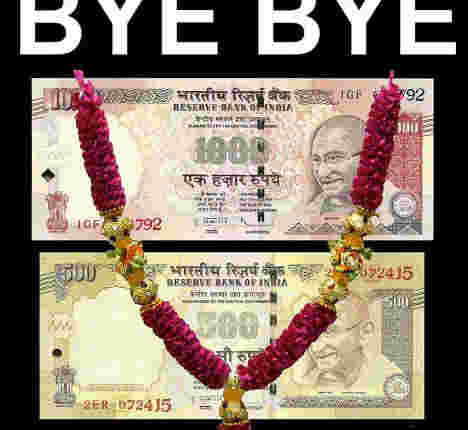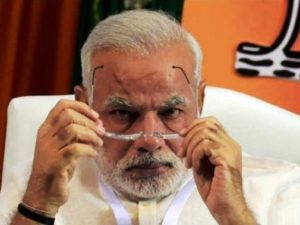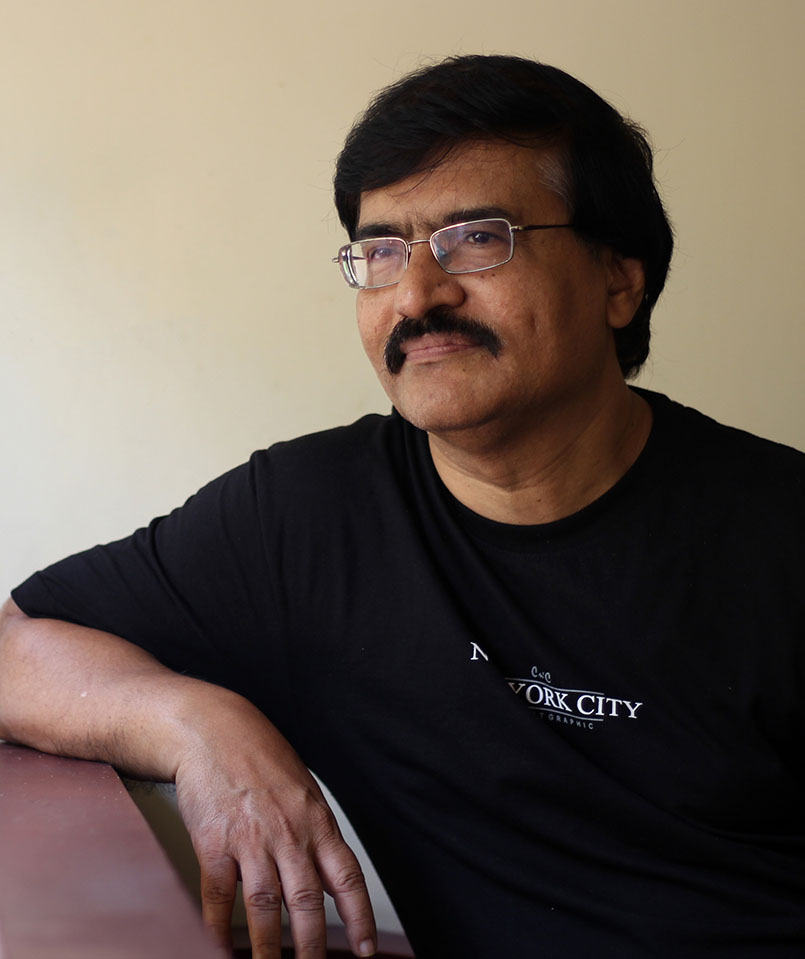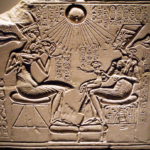“In the long run we are all dead”
– John Maynard Keynes
The Prime Minister of India addressing the nation at 08.00 p.m. on 8 Nov 2016 made the historical announcement that from midnight that night the currency notes of Rs.500 and Rs.1000 denominations would lose its legal tender status except for specified transactions. 86% of the liquidity in the nation’s economic system was thereby killed at one go.
The declared objectives of the demonetization were as follows:
1. Starve off terror funding.
2. Extinguish the high denomination fake currencies in circulation.
3. Eliminate black money from the economic system.
4. Eradicate the scourge of corruption.
None really knew the quantum of fake currency or black wealth held in cash. None had dared a demonetization of such a massive scale in the past. Since there was no known template, it was impossible to predict the final outcome of the gambit. The citizens clung to the assumption that the authorities had done their homework and factored in all implications. So, I wrote the following comment on the Facebook the next day:
“I am not a Modi fan. I am also unsure how the whole process would pan out and impact the micro and macro economy… But I believe that the Government has taken a right and courageous decision. Of course, there would be some hardships for the citizens for a few days. There would be some confusion for a few days. Then, that is inevitable since the efficacy of the move was in its suddenness. A short period of inconvenience for the long-term good of the nation should be accepted by the citizens. I am not sure how much black money would be eradicated through this move. But it would certainly wipe out the evil of counterfeit currency circulating in the system. That should be a great relief for all of us. It should also help us fight terrorism since counterfeit currency minted by our enemies is aiding and abetting it…”
The expectation was that there would be a transitory cash crunch for a week or so because of the logistic issues related currency supplies. It was simply beyond comprehension that such a highly disruptive step would be taken without adequate preparations and stock of currencies with the RBI. As weeks passed and the government repeatedly shifted goal posts, it became obvious that the demonetization move was a big adventure. When people pointed out the pathetic state of the preparedness of the system, they were told that the lack of preparation was the real preparation.
The ATMs ran dry. People stood in queues from dusk to dawn to collect their cash-ration only to be informed at the end of the day that nothing was left of the day’s cash quota. Families often put their aged people in the queues since others could not afford the regular queuing up. Over a hundred people reportedly died because of exhaustion. Desperation and frustration drove some to suicide. Families that had planned weddings had harrowing times arranging cash to keep up traditions. So were people who had their dear ones in hospitals. However, the PM apparently relished it all. For, with a comic smile on his face, he told his Japanese audience a couple of days later, ‘there is a wedding in the house, but no cash; mother is sick and should be taken to the hospital, but no cash.’ His NRI audience burst into side-splitting laughter!!
The fifty-day period that the Prime Minister had sought for a return to normalcy ends in another few hours. We do not know how much high-value fake currency was in the system as at midnight, 08 Nov 2016. The estimates do not suggest a substantial sum. In any case, it is now out of the system. But it might be just a temporary reprieve. The fake currencies might be back with a vengeance sooner than later. There are already reports of people being duped with copies of Rs.2000 notes, thanks to the poor paper and print quality of the new notes.
We plain citizens had to stand in queues to exchange or deposit our invalidated currencies. We also had to queue up to receive our quota of cash withdrawals. While lucky ones in the queues received part of the quota and the unlucky ones went home empty handed, huge quantities of new currency notes were going out through the back doors of the banks to fill the coffers of the corrupt, the black money holders and the racketeers. The Indian ingenuity simply turned an operation to end corruption and black money into a great opportunity for conversion of black money through corrupt means. We are told that demonetization of high-value currencies was a highly secret, well thought out and fail-proof process. We believed the Prime Minister. But now we know that those who needed to know did know, and took care of their black money before and after 08 Nov 2016. The queues were only for the poor, the innocent, the ignorant and the naive…
One would have expected people to be angry towards the government for devastating their quiet and simple lives through this ‘surgical strike’ of demonetization. But, surprisingly this does not seem to be the ground reality. Although there has been some erosion of the initial euphoria, a substantial section of the population apparently still supports the move. They believe that the steps taken by Prime Minister Modi would be good for them and the nation in the long run.
Here are some of the likely reasons for that support:
a) Ordinary citizens are disgusted with the stranglehold of corruption on the system. They are still willing to give the benefit of doubt to the Prime Minister who, they believe, is trying to clean up the system of its filth of accumulated evils of the last seventy years.
b) We ordinary mortals are extremely jealous by construction. Obviously, everyone envies everyone else who is prettier, smarter, richer… The poor villager knows that the demonetization has made his life miserable. Yet, the poor are not unduly distressed or angry. They carry on gritting their teeth and enduring their pains under the delusion that the Prime Minister’s move is inflicting worse pains to the rich. It is apparently the joy of sadistic pleasure.
c) Christians had encountered severe persecution in the Roman Empire in the early centuries. They were burned, beheaded and thrown to animals. Yet, many people, instead of concealing their faith to save their lives, went to the authorities, confessed their faith and asked to be put to torture and death. They believed that if they suffer and die for Christ, they would certainly enter paradise. The term “vegan fallacy” describes this human behaviour. We tend to believe that if something tastes terrible, it must be good for us. So, when people, particularly the poor and unlettered rural folks, find that the whole nation is suffering, they believe that come the dawn of New Year 2017, they would all wake up in El Dorado.
d) A few days back, the Vice President of the Congress party told the media that there would be an earthquake if he opens his mouth. It was pure rhetoric. And most people took it as just “sound and fury, signifying nothing”. Apparently, his image as ‘Pappu’ stay stuck in the minds of many. Much of what Prime Minister Modi has been speaking too is high-pitched hyperbole laced with a liberal dash of showmanship and melodrama. It might sound hollow to many. Yet, a sizeable population still believes him, thanks to his glorified image as the “Vikaas Purush” with a “56-inch chest” that has been created and sustained at an enormous cost to the public exchequer.
What happens in the end? Theories were floated in the beginning to the effect that at least four lakh crore rupees worth demonetized currencies might not return to the banking system since people might just burn up their black money to escape detailed scrutiny by the Income Tax authorities. The propaganda has been that the RBI would cut an extra cheque to that extent in favour of the government. This huge windfall dividend could be used for social welfare programs and rural infrastructure. May be, some amount could be credited to the Jan Dhan Accounts in the memory of the 15 lakh rupees to each account promised by the PM during the Parliament election campaign. However, the trends indicated that almost all the invalidated currencies would be coming back into the system. Of course, the IT people might then do their scrutiny and eventually recover some money out of it in the form of Income Tax and penalties. But the dreams of a windfall gain of four lakh crore rupees has been dashed lock stock and barrel.
NITI Aayog Member Bibek Debroy said in a recent media interaction that the most likely scenario is that the demonetization would rake in a gain of some 50,000 crore rupees. Remember, he is part of the government. The cost of the demonetization exercise is not easy to estimate with any accuracy. But, some estimates appearing in the media suggest that it should be around 1.5 lakh crore rupees. As things stand even a net gain of even 50,000 crore rupees looks more or less impossible.
Prime Minster Modi is an extremely intelligent individual. A few weeks down the line after the demonetization proclamation, he realized that the lofty objectives he had initially put forth to justify the drastic measure might come a cropper in the end. He also realized that enough liquidity would not be available even after 30 December 2016. So, he deftly changed his narrative. He stopped talking about the return of normalcy after 30 Dec 2016. The pains of demonetization would not vanish after 30 Dec 2016. Instead, he now says that the pain would start easing after 30 Dec 2016. And he came up all guns blazing with the idea of India as a cashless economy. In his latest man-ki-bath radio talk, the Prime Minister urged the people to convert their mobile phones into their bank to make India a ‘cashless economy’. He used the English term cashless economy, perhaps, for want of a corresponding term in Hindi. One wonders how many villagers listening to him understood the meaning of the term ‘cashless economy’.
The government subtly altered its tale on the economic disruptions induced by demonetization. It started saying that the disruption was intended to create a situation that would force citizens to abandon cash and embrace digital cash instead. If nothing else, the skill of the government to spin alluring fables to extricate itself out of tight spots deserves accolades! So, the Aadhaar man Nandan Nilekani appears in the media claiming that the nation could be turned cashless in just six months. He is made technology adviser to the PM almost immediately after coming out of the TV studio. Not to be outdone, Amitabh Kant, the CEO of NITI Ayog followed him to say that India would go cashless in just three months flat!
I do not think anyone is against going digital. But is India ready for a sudden switch over to digital money? The ruling party spokesperson urges people to use Paytm instead of cash. He forgets that Paytm is owned by Alibaba, a Chinese corporate. (In the same breath, people are urged to boycott Chinese goods). Paytm issues full-page newspaper advertisements with the picture of the PM with an endearing smile on his face. In this unbounded enthusiasm for smart money, everyone glosses over the reality that e-wallets like Paytm are only for smartphone users. How many rural folks could shell out something like Rs.10,000/- or more to buy a smart phone? Nobody is speaking about the commission charged by the companies providing e-wallet service. Their business is booming. They are virtually minting money. And the e-wallet companies confess that they have cut down on advertisement costs since their promotional work is now being done by the government using taxpayers’ money.
The apostles of digital cash tell you that you do not need a smart phone for digital transactions. They tell you that you can use USSD (Unstructured Supplementary Service Data) system with an ordinary mobile phone. But technology experts say that the USSD technology is terrible. It calls for knowledge of English Language and the skill to enter the precise syntax. No wonder, that for all the promotional blitzkrieg, only a thousand odd transactions have been done through the National Unified USSD Platform (NUUP), so far. The insignificance of a thousand or a few thousand transactions against a population of 1.3 billion should be obvious for anyone. No better is the case with “Unified Payment Interface” (UPI). The MD of SBI says that it has serious glitches. Besides, UPI transactions too are done through smart phones. In short, almost all money transactions through mobile phones are currently through private e-wallet service providers and only through smart phones with web access. So, converting your mobile phones to your bank is easier said than done.
For the nation to go digital, there must be much more Internet penetration and bandwidth availability. A report appearing in the Economic Times on 27 Dec 2016 says “As many as 950 million Indians still don’t have access to the Internet despite lower data tariffs and falling smartphone prices, an Assocham-Deloitte finding revealed… the joint study pointed out at the country’s significant skills shortfall, which is merely 2.3% over a global average of 50%, adding that efforts are necessary to augment digital literacy”. Can India really switch over to a digital economy overnight with a digital literacy of just 2.3%?
The present status of money transactions as reported in the media is that 80% of the transactions are done through cash and 20% through digital means including NEFT, RTGS etc. The plan as it stood before demonetization was to push this up to 50% by end of the year 2020. The experts are of the view that at best we might be able to achieve a 10% growth and make it 70% cash and 30% digital by the end of the year 2017. So, pray, whom are we trying to fool by saying that India would go digital in 3/6 months?
As the number of transactions mount, the security threats too would rise. Even the most highly secured systems are not immune to hacking. For instance, JPMorgan Chase & Co, a leading global financial services firm and one of the largest banking institutions in the United States reportedly spends a sum of US$300 million a year (which is nearly INR 25,000 crore) on the security of their digital systems. Yet their system was badly hacked. Even NASA and CIA systems are not immune to hacking. A sudden spike in the number of transactions would render the digital system more vulnerable to hacking. With limited digital skills, the poor might end up losing all their money. And as things stand, there are no regulations dealing with the losses suffered in e-wallet transactions. (Of course, necessary legislations might be in the pipeline). Where does all this leave the poor and the digitally illiterate of the country, who are being told that going digital is simply heaven?
Is the push for a digital economy really meant to help the modest little corner stores? A Point of Sales (PoS) terminal costs something like Rs.10,000/-. The shop needs a secure Internet connection. This too costs money. Also, the shopkeeper has to bear the transaction cost, which could be anything between one percent and two and a half percent of the value of each transaction. Can a shopkeeper struggling to make ends meet from the meager returns from his small shop really afford all these? When cash remains a scarce commodity, customers would be pushed into the big malls even for small value items. The little kirana stores would lose sales and would long before go out of business. Is this what the government wants? May be it is…who knows?
There is another critical issue with the idea of everything going digital. It would invade into citizens’ privacy. It would lead to more and more government control over our lives. For instance, in a digital world, the government would easily know where do I shop, where do I dine, what kind of food and drinks I buy, which doctors or hospitals I visit, which are my travel destinations, what is my mode of travel, where do I stay, which places do I visit and so on and so forth. The data trail left in the digital world is valuable for many others, besides the government. You would not know how your data would be used. It might even put your life in danger. I am not being alarmist. But it is better to be aware of some of the critical realities of the cyber world.
Let me make it clear that I am not suggesting the retention of status quo. Digital is the future. My concerns are limited to this mindless push for digital money. The current narrative that everything is virtuous with digital and evil with physical might be dangerous. The citizen should have the freedom and flexibility to choose the mode of transactions. I admit that all freedoms come with reasonable restrictions. At the same time, total governmental control is also not a nice proposition in a democracy.
Finally, we are all waiting to know the consequences of the demonetization gamble. “It does not require a Ph.D. in Economics to understand that when the bulk of the population is strapped for cash, economic activity and employment take a dip. Farmers have been dumping vegetables on the roads for want of remunerative price. Traders and vendors have seen their sales dive, often by 50 percent or more. Sales of durable goods have crashed across the board. Construction activities have slowed down. And most importantly, workers have been laid off on a large scale…” (The Hindu dated 29.12.2016). The informal sector has suffered the worst. But, as Esther Duflo, one of the leading development economists of the world and a professor at the department of economics at the Massachusetts Institute of Technology (MIT) in the US says, “…the real impact of the currency-scrapping gambit may never be known because India’s statistical machinery does not capture data on the informal economy on a regular basis”.
The citizens might never know the truth about the cause and consequences of the sudden demonetization of high-value currencies. The citizens do not yet know the process followed in taking the demonetization decision. They do not know the exact value of the invalidated currencies as at the midnight of 08 Nov 2016, the value of such currencies so far returned, or the extent to which remonetisation has been achieved so far. There are several figures floating around. The citizens are in the dark about how the success of failure of the exercise would be evaluated. The citizens do not know whether normalcy would return after 30 Dec 2016 as originally committed. We still do not know whether normalcy means the restoration of the position before the midnight of 8 Nov 2016 or a ‘new normal’ of rationed cash… The government has been turning more and more opaque to the citizens. At the same time, the government wants the citizens to be more and more transparent… I do not know whether this is really the idea of Indian democracy…
———————–













It is a comprehensive viewpoint on the subject sir. Covers all aspects.
@Ruchi
Thank you.
I value your views. I am also grateful that I have not been called a corrupt anti-national for expressing an independent view that is not in line with the expectations of the establishment.